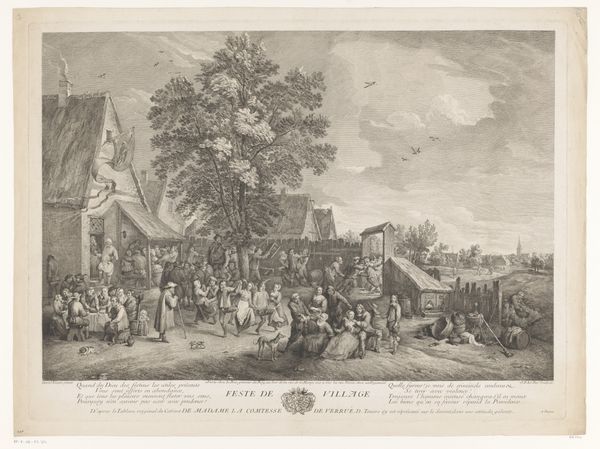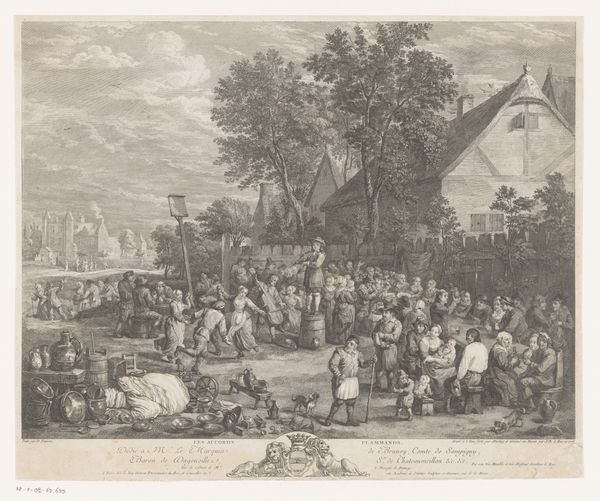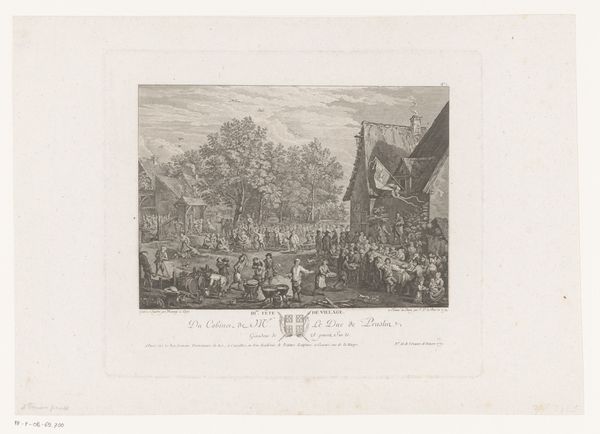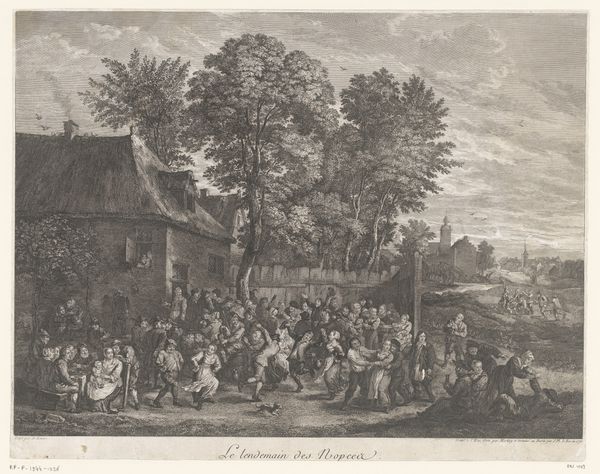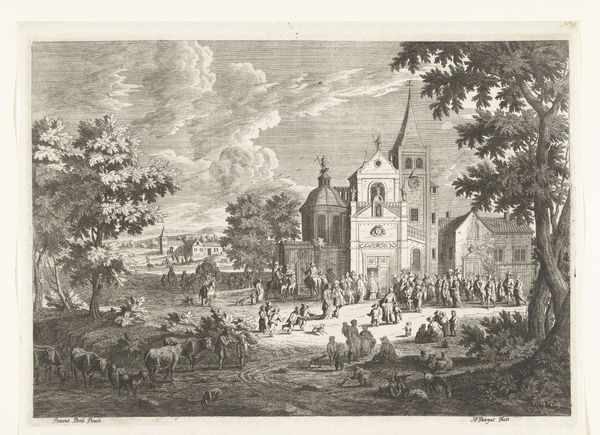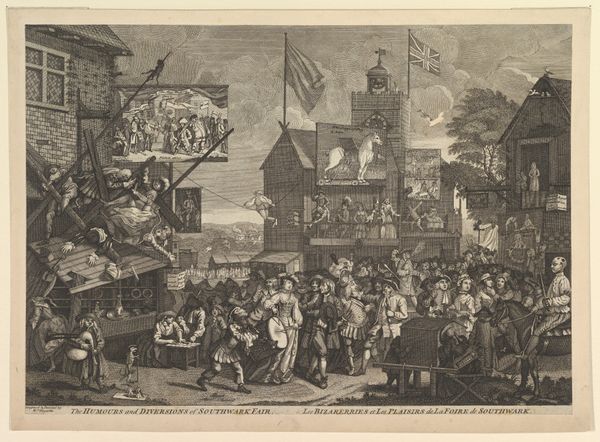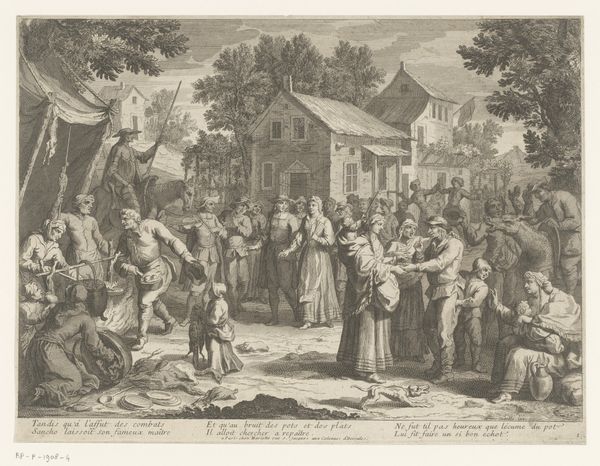
print, engraving
#
narrative-art
#
baroque
# print
#
old engraving style
#
pencil drawing
#
cityscape
#
genre-painting
#
engraving
Dimensions: height 570 mm, width 750 mm
Copyright: Rijks Museum: Open Domain
Editor: This is "Dorpsfeest," or "Village Festival," an engraving made in 1748 by Jacques Philippe Le Bas. The level of detail is incredible! It feels almost photographic in its rendering of daily life. How would you interpret this work? Curator: The power of this print lies precisely in its structural organization and the careful modulation of tone. Observe how Le Bas employs a sophisticated system of cross-hatching to delineate form and texture. The distribution of light and shadow is particularly effective in creating a sense of depth and visual interest. Do you notice how the foreground is rendered with greater detail than the background, thereby drawing the viewer's eye into the composition? Editor: I do see that now! The figures in the front really pop, and everything else sort of recedes. What about the architecture? It’s very prominent in the piece. Curator: Indeed. The architecture functions as a structuring element, dividing the pictorial space and creating a rhythm of forms. Note how the diagonal lines of the roofs intersect with the verticality of the trees, producing a dynamic interplay of spatial relationships. Also, how does the texture contrast in surfaces—the roughness of thatch and smooth surfaces of faces and clothes impact the image as a whole? Editor: That’s fascinating; I hadn’t considered that the architecture does play such a major structural role in directing my sightlines and helping emphasize contrasts in form. Curator: Exactly! Le Bas orchestrates a complex visual language in "Dorpsfeest", and one comes away with a deeper appreciation of visual strategies. Editor: Thanks, I see the picture in a whole new light, not just the scene depicted, but also the printmaking style in itself.
Comments
No comments
Be the first to comment and join the conversation on the ultimate creative platform.
